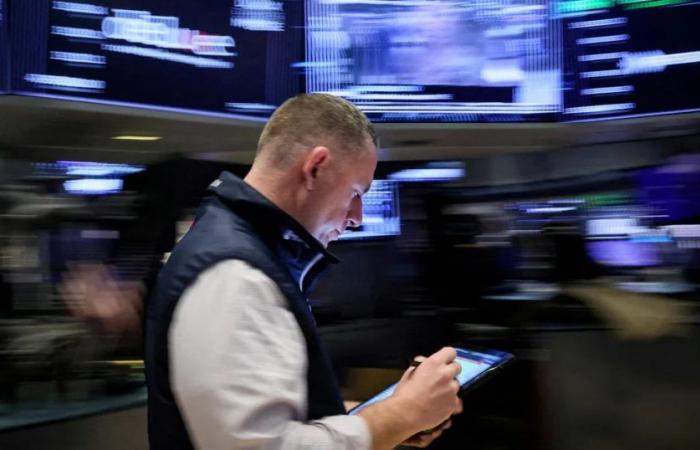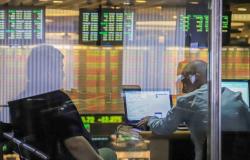
The stock market showed very positive numbers for shares this Thursday, due to renewed speculative positions, awaiting a favorable vote for the Government on two bills with which the president Javier Milei aims to attract investment and get the battered economy back on track.
The lower house, which had already approved the Bases Law and a tax reform project must ratify its approval following modifications made by the Senate two weeks ago.
“Is most important short-term fiscal packageespecially in relation to whether the Government will finally be able to maintain the original projects on Income Tax and Personal Property. We say this because the official initiative would imply giving support to tax revenues this year, in a context in which the collection in real terms of taxes linked to the activity has been falling sharply given the current recession,” he said. Juan Manuel FrancoChief Economist of the SBS Group.
“Although (the official proposal) suffered significant pruning taking into account the original project, the government would manage to approve a framework that allows it to implement the measures it considers necessary to rebuild the Argentine economy,” he reported. Wise Capital.
In this context, the leading stock index S&P Merval of the Buenos Aires Stock Exchange improved by a solid 3.9% to a close of 1,635,667 pointsto approach the intraday nominal record of 1,665,774 points reached on June 3.
The positive trend was echoed abroad. Argentine ADRs on Wall Street advanced steadily, led by the papers of Transportadora Gas del Sur (+7.7%) and Telecom (+7.6%).
“The Merval in dollars, which has been on an upward trend since the end of 2023, is showing rebound zones on a key day. The USD 1,170 level would seem to be a floor, although it could go looking for the USD 1,000 zone (200-day average) and still not lose the upward trend. In any case, it would be bad news because many ADRs would lose important supports,” said the experts at Stock Market Rava.
In 2024, the Merval panel maintains an increase of 75.9% in pesos – close to the inflation of the first semester – and 27.2% measured in dollars “counted with settlement.”
“The returns on Argentine stocks since the end of last year have been very positive in light of the change in administration. The valuations of Argentine companies remain at attractive levels today, given that they started from extremely depressed levels,” he said. Capital Markets Argentina.
“Although we expect high volatility in the Argentine market in the short and medium term, we believe that the potential improvement in long-term economic conditions presents an interesting opportunity to invest in Argentine assets,” the report added.
Sovereign bonds in the Electronic Open Market (MAE) reversed the intraday trend and averaged a decrease in pesos of 0.4%, with a risk country measured by the JP Morgan bank, which advanced 16 points for Argentina, in the 1,445 basis points at 5:30 p.m.
“Global bonds are in a state of stand bywhile the interest collection date approaches on July 9,” he recalled. Delphos Investmentand noted that “the disbursement represents 2.8 billion dollars, of which 1.5 billion correspond to interest payments and the remainder to the amortization of bonds maturing in 2030.”
Greater market needs for genuine foreign exchange pressured the BCRA to sell USD 85 million from its coffers in the wholesale market, to go into negative territory for some USD 46 million in its June balance, compared to the USD 2,522 million acquired in May. The BCRA records sales in eight of the 15 rounds of the month -in the absence of an operating session-.
“There are people with good intentions thinking that we have to get the dollar blendanother one that must be devalued and another that compensates with a reduction in the PAIS tax,” said the economist. Gabriel Caamanodirector of the consulting firm Outlier. “It is difficult to accumulate reserves with restrictions. We must find a way to deal with these issues in the most consistent way and begin to mark with concrete decisions the way out of the restrictions, to ease uncertainty,” he added.
The agro-export sector is governed by an export settlement scheme under the dollar modality blendthrough which they can liquidate 80% of their currencies at the official dollar price and 20% at the “settled cash” stock market value.
The amount traded in the wholesale market improved this Thursday by a significant USD 163.7 million or 77.4% compared to the previous round, to reach USD 375.4 million in the cash segment. The official exchange rate rose 50 cents to $911.50, with a exchange rate gap of 48.7% regarding the free dollar, at $1,355 for sale. The “blue” lost 10 pesos on the day and moved away from the intraday record of $1,380 reached on Wednesday morning.





